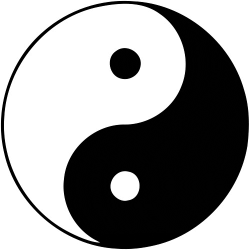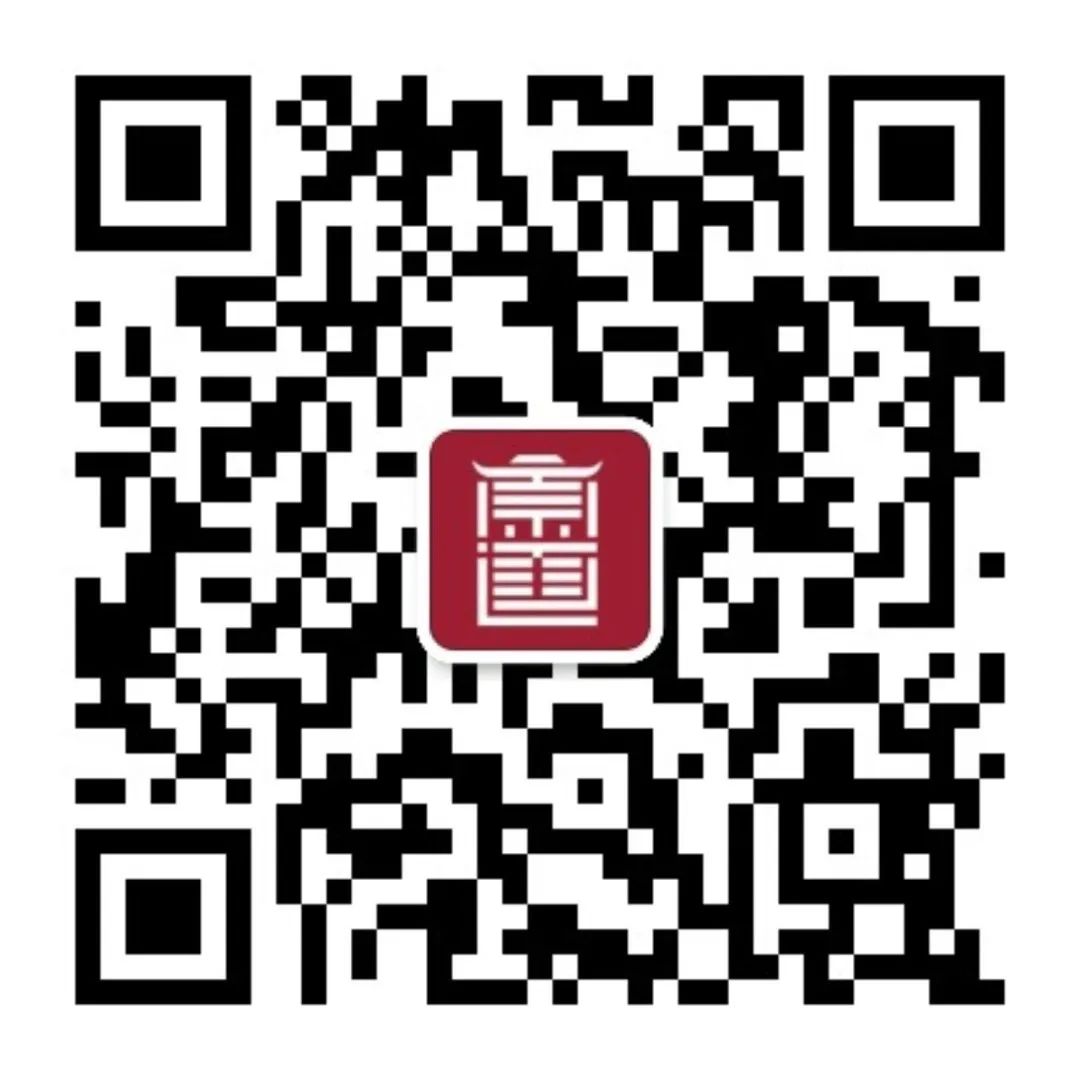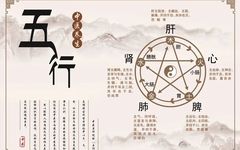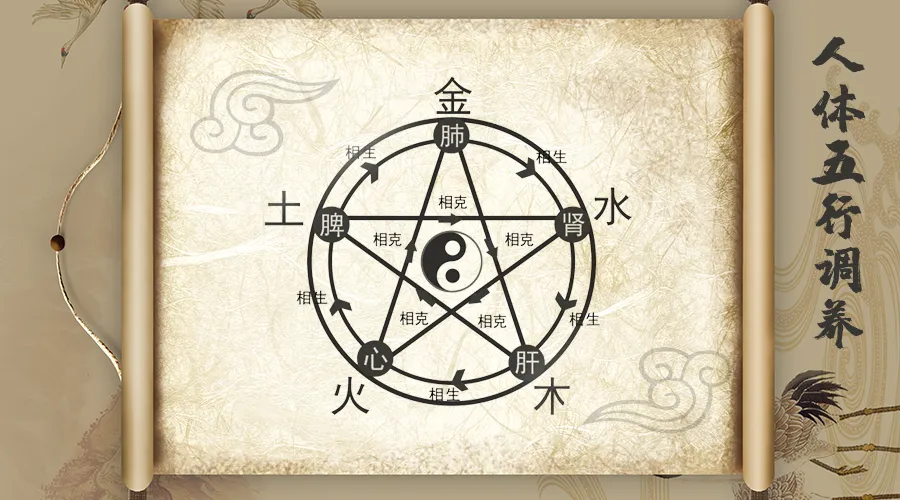
The Five Elements theory permeates the field of medicine, primarily used to correspond with the five organs of the human body: the liver belongs to Wood, the heart to Fire, the spleen to Earth, the lungs to Metal, and the kidneys to Water.
This theory explains the physiological functions of the five organs based on the characteristics of the Five Elements.
The nature of Wood is flexible and straight, with branches and leaves that reach out, possessing the characteristic of growth. The liver prefers to be free and dislikes depression, having the function of dispersing and venting, thus it is associated with Wood.
The nature of Fire is warm and upward, the heart’s Yang has the function of warming, hence the heart is associated with Fire.
The nature of Earth is thick and nurturing, the spleen has the function of transforming food and transporting nutrients, nourishing the five organs and six bowels, and is the source of Qi and blood transformation, thus the spleen is associated with Earth.
The nature of Metal is clear and contracting, the lungs have a cleansing nature, and the lung Qi descends smoothly, thus the lungs are associated with Metal.
The nature of Water is moistening and descending, with characteristics of coldness, moisture, and storage; the kidneys have the functions of storing essence and governing Water, thus the kidneys are associated with Water.
The Five Elements theory connects the structure of the body’s organs with the five directions, five seasons, five Qi, five tastes, five colors, and five sounds in nature, thereby unifying humanity with the natural environment.
Taking the liver as an example, the Suwen: Yin Yang Ying Xiang Da Lun states, “The east generates wind, wind generates Wood, Wood generates sour, sour generates the liver, the liver governs the tendons… the liver governs the eyes.” Traditional Chinese medicine expresses the holistic concept of harmony between heaven and humanity through the connections between the eastern direction, spring, wind, sourness, and the liver, tendons, and eyes.
1. The Interrelationship Among the Five Organs
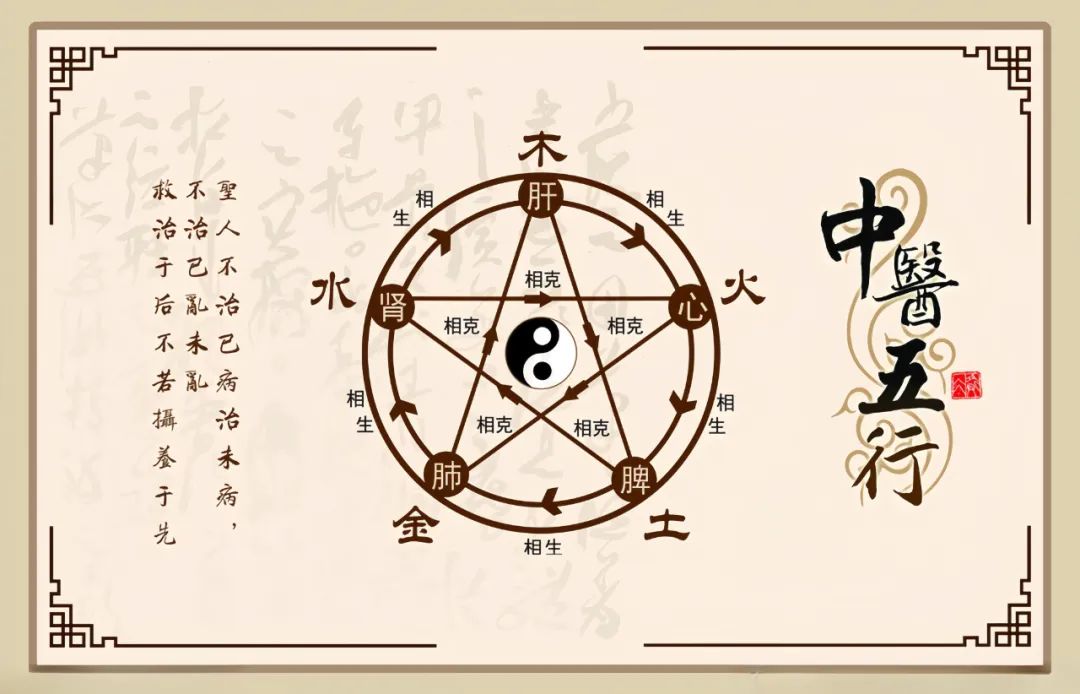
The functional activities of the five organs are not isolated but interconnected.
The Five Elements associations of the organs not only clarify the functional characteristics of the organs but also utilize the theory of generation and restriction of the Five Elements to explain the internal connections of the physiological functions of the organs. This illustrates that the five organs have both mutually supportive and mutually restrictive relationships.
1. The Mutual Supportive Relationship Among the Five Organs
The liver supports the heart, which is like Wood generating Fire, as the liver stores blood to nourish the heart;
The heart supports the spleen, which is like Fire generating Earth, as the heart’s Yang can warm the spleen;
The spleen supports the lungs, which is like Earth generating Metal, as the spleen Qi disperses essence, which returns to the lungs;
The lungs support the kidneys, which is like Metal generating Water, as the lung’s Metal clears and descends to assist the kidney’s Water;
The kidneys support the liver, which is like Water generating Wood, as the kidneys store essence to nourish the liver’s Yin blood, etc.
This explains the mutual supportive relationship among the five organs using the theory of generation of the Five Elements.
2. The Mutual Restrictive Relationship Among the Five Organs
This is essentially a restrictive relationship, which is also known as the relationship of overcoming.
Since “within restriction there is generation” and “restriction leads to transformation,” it is referred to as “mastery.”
As stated in the Suwen Jizhu: “The heart governs Fire, but is restricted by the kidney’s Water, thus the kidney is the master of the heart’s transformation.”
Following this logic, the lungs belong to Metal and are restricted by the heart’s Fire, thus the heart is the master of the lungs;
The spleen belongs to Earth and is restricted by the liver’s Wood, thus the liver is the master of the spleen;
The kidneys belong to Water and are restricted by the spleen’s Earth, thus the spleen is the master of the kidneys. This explains the mutual restrictive relationship among the five organs using the theory of overcoming of the Five Elements.
In summary, the application of the Five Elements theory in physiology can be summarized in the following three points:
First, the five organs correspond to the Five Elements, and the five organs are also connected to their respective five body parts, five senses, and five emotions, thus linking all parts of the body together, forming a physiological and pathological system centered on the five organs, reflecting the holistic view of the human body.
Second, based on the generative and restrictive laws of the Five Elements, it explains the interconnections and mutual restrictions among the liver, heart, spleen, lungs, and kidneys, further establishing the basic concept that the human body is a complete organic whole.
Third, the Five Elements associations centered on the five organs illustrate the unity of the interconnections between the human body and the external environment.
In conclusion, the application of the Five Elements theory in physiology serves to explain the unity of the interconnections among the organs and between the human body and the external environment.
2. The Lively and Radiant Yin and Yang
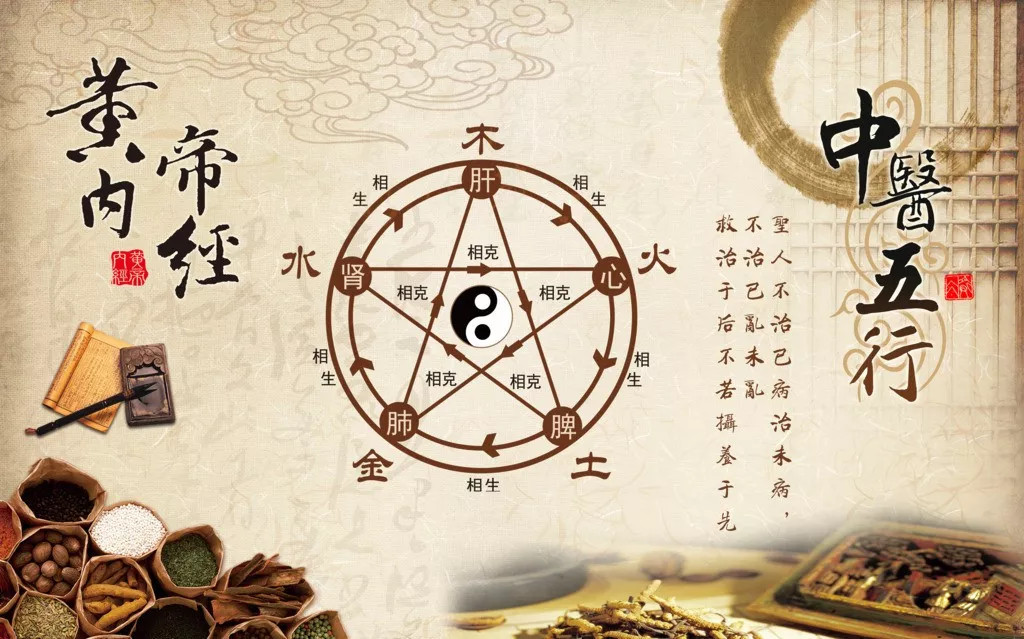
Yin and Yang, the Three Yin and Three Yang, and the Five Elements are the most fundamental and important substances upon which Traditional Chinese Medicine is based. To regard Yin and Yang, the Three Yin and Three Yang, and the Five Elements merely as philosophical concepts is absolutely incorrect.
This is simply because contemporary science has not yet invented instruments capable of observing them. The Yin and Yang, the Three Yin and Three Yang, and the Five Elements observed internally are very concrete, objective, and truly existing substances, existing within the two major categories of material: the material and the immaterial.
The three substances of Yin and Yang, the Three Yin and Three Yang, and the Five Elements form a whole, a large family, and are merely named separately for the sake of understanding.
Immaterial substances can be further subdivided into two major categories based on their attributes, one called Yin substances and the other called Yang substances, abbreviated as Yin and Yang.
The movement of Yin and Yang substances gives rise to the various systems of the Five Elements and the Three Yin and Three Yang substances.
Yin and Yang have structural and organizational laws; our ancestors classified the organized and structured Yin and Yang substances in the human body and the universe according to the degrees of Yang and Yin, dividing them into three Yin and three Yang, with three types of Yin and three types of Yang, totaling six types.
Each of the twelve meridians in our body belongs to one of the three Yin and three Yang, thus these twelve meridians, filled with the true Qi of the three Yin and three Yang, are also called the six meridians.
There are organs in the human body specifically responsible for managing, moving, transforming, utilizing, and storing Yin and Yang and the Three Yin and Three Yang substances, which are the five Zang and six Fu organs.
The five Zang are the heart, liver, spleen, lungs, and kidneys, each belonging to one of the five attributes, producing five different types of true Qi to sustain human life.
The five different functions of processing true Qi in the five Zang and the five types of true Qi produced by them have been collectively referred to by our ancestors as the Five Elements.
Our ancestors used the Taiji, He Tu, Luo Shu, Nine Palaces, and Yi Tu to represent the process of derivation and movement from Yin and Yang substances to the Three Yin and Three Yang, and then to the Five Elements.
In the natural universe, Yin and Yang, the Three Yin and Three Yang, and the Five Elements substances also objectively exist; the macrocosm and microcosm are one and the same.
For a long time, we have regarded Yin and Yang as philosophical concepts, not knowing what they truly are. It is like being separated from our parents for three hundred years, seeing them every day, yet not recognizing them. This illustrates the extent of the severance and crisis in the inheritance of the excellent components of traditional Chinese culture, which is a frightening matter! This is our sorrow.
3. The Substance of Yin and Yang
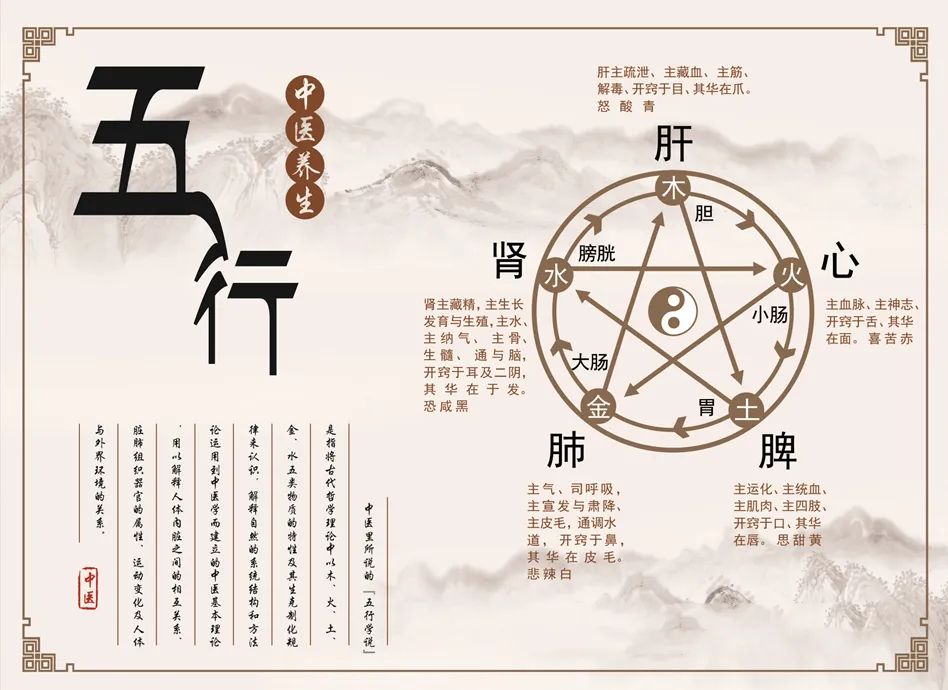
1. The Yin and Yang We Experience in Life
In our living environment, when the sun rises and the sunlight shines, it is warm; this is Yang, the most external Yang Qi, which can be seen with the naked eye. Extending from this, there are many more Yang things.
All things grow relying on the sun; without Yang, life in the solar system cannot survive. Human civilization is a sun civilization.
Ancient Egyptians and the people of ancient Sichuan in China worshipped the sun as a god; when the moon rises at night, it is Yin, as are sunny days and cloudy days; phenomena of addition and subtraction; Yang and Yin; male and female; south of the mountain is Yang, north of the mountain is Yin; fire is Yang, ice and snow are Yin. The visible manifestations of Yin and Yang are everywhere.
2. The Yin and Yang Under Internal Observation
Yin and Yang, as the basic classification of this large category of immaterial substances, have various forms and appearances, which are complex. They can be in gaseous, luminous, or spherical states.
Connecting with the “Dao,” a preliminary exploration of the future world religious reform (harmonious coexistence of humanity) is presented.
First, it clarifies the common flaw of “conceptual fixation” in human existence—artificially setting a concept, limiting understanding to that concept, and missing the complete understanding and practice of the truth of things and the natural Dao, which cannot effectively solve practical problems.
Thus, in dealing with “concepts,” we should adhere to the principles of “grounding in the original, focusing on connotation, keeping pace with the times, dynamic change, solving problems, and seeking truth from facts.” The concepts of “religion” and “Daoism” are such, and based on Daoist thought—where the Great Dao connects, a preliminary exploration of future world religious reform (harmonious coexistence of humanity) is conducted, reflecting the inherent characteristics of “Dao” itself, which is “boundless without outside, boundless without inside, and omnipresent.”
1. Science and democracy are products of historical progress, while harmony and freedom are humanity’s eternal pursuits. However, in today’s history, humanity faces significant issues: human actions infringe upon nature, material desires corrode the spirit, diverse political systems lead to chaos, and faith becomes misguided… resulting in science detaching from humanity, democracy being merely nominal, and harmony being impossible to establish, with freedom running rampant… All problems of human existence can superficially appear as “the wrath of heaven and the resentment of people,” but fundamentally, they are “spiritual calamities.”
2. Religion seeks to uncover the truths of the universe, life, and society—only by harnessing the guiding, resolving, and comforting roles of religion can we educate the spirit, inspire wisdom, encourage freedom, restrain indulgence, eliminate ignorance, and save arrogance, coordinating with various social functions such as politics and law, promoting the establishment of a shared governance between humanity and divinity, which is the ultimate way out for human society. However, both the connotation and form of religion need to be inherited and reformed simultaneously, keeping pace with the times, to reflect the unity of humanity with science, spirit with material, faith with cultivation, wisdom with morality, and governance with world peace, while dialectically handling the relationships between “education” and “church” and their correspondence with society, the state, and the nation, seeking and striving to achieve the free existence of humanity.
3. “Shared governance between humanity and divinity” differs from the historical narrow sense of religion dominating politics; it is based on the unity of faith, cultivation, and order management—grounded in a holistic view of nature, which serves as a principle, method, and goal, establishing a balance between spiritual purity and secular needs, achieving harmonious coexistence between humanity, divinity, and nature. In other words, it is through the collective wisdom of humanity, divinity, and nature that we can address human shortcomings, achieving a series of social goals such as faith, cultivation, morality, conscience, law, order, democracy, and checks and balances.
4. Whether for individuals or social groups, only by adhering to the three paths of “heaven, earth, and humanity” (laws, principles, methods) can we achieve “shared governance between humanity and divinity”—”heavenly path” represents the cultivation of the spirit (heart nature) in accordance with the natural Dao, “earthly path” represents the historical traditions of different regions, ethnicities, and nations, and “human path” represents the current secular needs of society. Following the unity of the three paths allows humanity to establish a balance between meeting secular needs and saving the soul.
5. In the face of the common flaws of human nature—”conceptual fixation, biased generalization, excessive desires, depletion of vital energy, and inconsistency between words and actions”—humanity must adhere to the unity of the three paths, making choices and balances between truth and falsehood, justice and evil—cultivating the essence, supporting the right, and eliminating the evil, benefiting humanity and reducing disasters, reflecting the benevolence of heaven.
6. Currently, the problems and accumulated issues of religion and humanity are deep-rooted; only through “diversity and unity” can we solve these problems. The chaotic thoughts of diversity—how to achieve “unity” in the era of “a hundred schools contending”? Only by the “Dao” of the universe connecting heaven and earth, connecting all things, and connecting diverse thoughts, breaking through conceptual fixation, extracting the essence and substance—implementing reform can we blend the achievements of today into the inheritance of human civilization—respecting the individual life, the existence of various civilizations and religions, while allowing individuals, civilizations, and religions to return to (adhere to) the same great Dao of truth, and achieve “unity” within a certain range of nations, states, or communities. Otherwise, standing on self-interest will only lead to chaos in ideology and social order.
7. Reform lies in application. Application lies in suitability. Suitability lies in grounding in reality, understanding the great Dao, inheriting history, blending civilizations, pioneering and advancing, and being flexible, effectively and relatively solving the current and future problems of humanity.
8. Daoism regards the “Dao” of the universe as the highest faith and educational basis. The “Dao” as the origin of all things is not only a conceptual existence of ideology but also an objective independent existence that transcends ideology—its former existence cannot truly reflect the latter, and the reality of human problems requires constant adjustment, supplementation, and perfection. Therefore, “Daoism” as an objective independent existence in real life is far greater than conceptual existence and should not be bound and limited by concepts, but should be based on real experiences and current conditions, making adjustments, supplements, and improvements based on historical traditions.
9. Daoism is the education that the ancestors of China imparted to their descendants (the descendants of the dragon), including narrow Daoism—having specific doctrines, regulations, rituals, and organizational nature, and broad Daoism—having the nature of implementing national consciousness and educating the entire populace. Historical facts prove that Daoism originated from ancient Chinese civilization, forming the entire history of Chinese civilization’s “Dao lineage” from the creation of heaven and earth by Pangu to the Three Sovereigns and Five Emperors—this is precisely the practice, understanding, and education of the early ancestors of the Chinese nation regarding the unity of heaven and humanity, which formed and maintained the vast civilization of China. If we detach from the existence of both narrow and broad Daoism, the Chinese nation and civilization will cease to exist. Thus, the complete and true concept of Daoism is fundamentally different from the so-called “atheism” and the concepts of sociologists regarding “Daoism”; the former believes that Daoism was directly established and evolved by the early ancestors of China through direct communication with the divine, while the latter narrowly believes it was founded by Zhang Daoling and is a product of human ideology, leading to a fragmented understanding of Daoism.
10. All world religions, human ethnic groups, and all things in the universe exist based on the “Dao”—to follow it is to live, to go against it is to perish. The essence of the “Dao” is the primordial true Qi (气) that balances the two opposing attributes of “Yin” and “Yang”—simultaneously possessing the unity of matter, energy, and information (spirituality), creating and generating all things, embodying the supreme of the universe. Different religions, human ethnic groups, and all things in the universe refer to it by different names based on their different understandings, such as “Pangu, Pangu Laozu, Hongjun Laozu, Xuantian Laozu, Huangtian Laozu, Yuantian Zhenren, Tianzhen Huangren, Wujilaozu, Wujilaomu, Wuliang Tianzun, Zushi Ye, Laotian Ye, Tiandi, Shangdi, Zhenzhu,” etc., all of which imply the “creator of the universe and the eternal supreme god”—wise and compassionate, dignified and generous, possessing supreme power, revered by both humanity and divinity. Humanity believes in it, communicating with its energy and wisdom, praying for peace, and achieving a return to the ultimate value of the spirit, which is equivalent to pursuing and adhering to the natural great Dao—promoting true knowledge and charity (following natural laws), while countering ignorance and baseness (violating natural laws), reflecting the unity of faith and cultivation, science and humanity.
11. Daoism has a unique and systematic understanding of the primordial true Qi, believing that it not only nurtured the initial life of Pangu but also played a leading role in the “creation of heaven and earth,” referred to as “pre-heavenly primordial Qi.” The Dao De Jing describes it as “One”: heaven obtains One to be clear, earth obtains One to be peaceful, spirit obtains One to be spiritual, valleys obtain One to be full… the sage embraces One as a model for the world… After heaven and earth are generated, the Yin and Yang Qi combine to form the “post-heavenly primordial Qi,” described as “Three” in the Dao De Jing, possessing the original energy and information that gives birth to all living things, referred to as “soul”—the soul’s primordial Qi is considered “post-heavenly” in relation to the universe, but “pre-heavenly” in relation to the physical body. At the same time, the physical body is generated from the combination of the Yin and Yang essence of the parents (the fertilized egg)—both types of “primordial Qi” are considered “pre-heavenly” for the living body, jointly constituting the essential existence and organic operation of the living body with energy and wisdom. However, most living beings lose their tranquil hearts, do not recognize the essence of life and cultivation, and only know how to use the primordial Qi without knowing how to conserve or nourish it, leading to physical and mental exhaustion, ignorance, and suffering. Another part of living beings maintains a tranquil mindset; when calm, the balance of Yin and Yang aligns with the characteristics of primordial Qi, allowing the primordial Qi to be conserved and nourished, providing the necessary energy and information (spirituality, wisdom) for the operation of the living body. Thus, the cultivation aimed at enhancing the energy and information of the soul is called “cultivating the true,” and reaching a certain level is referred to as “understanding the Dao” or “achieving the Dao,” with the sufficiency of Qi reflecting the level of “Dao practice.”
12. Human wars and conflicts occur not only within the same religion and civilization but also between different religions and civilizations, reflecting humanity’s limitations and sorrow in understanding and practicing the absolute eternal truth of the “Great Dao,” while also reflecting that what humanity understands and practices can only ever be relative truth. That is, all world religions, human ethnic groups, and all things in the universe can never represent absolute truth; only the supreme of the universe can represent it, but it is hidden in the formless and has never directly descended to the world, only spreading civilization through the dispatch of messengers, forming relative truths. Therefore, sincere faith, humility, and cultivation of the “Dao” will become a common task for all humanity, bringing together theism, atheism, and various religious beliefs and practitioners: sharing the same root, connecting through the Dao Qi, sensing the formless (the Great Dao), and practicing the tangible, overcoming the small self, seeking common ground while preserving differences, and jointly pursuing the greatest welfare of harmonious existence.
13. Religion exists based on the coexistence of “humanity and divinity”—according to the principle of “Yin and Yang mutually root and coexist,” human inspiration reflects the divine; the nature of the divine corresponds to the nature of humanity. Conversely, the divine is also a reflection of human ideology—humans are divine, and the divine is human; humanity and divinity are both independent and unified, dialectically expressed as the divine governing humanity, and humanity embodying the divine. It can be said that the civilization and wisdom of a person or a nation represent the power and wisdom of their divine—on a global scale, the divine is not an eternally unique concept but has ethnic, religious, and historical attributes. The divine of different religious beliefs has direct civilizational origins with different ethnicities or groups, or certain bloodline connections. At the same time, it reflects that the complex journey of human civilization corresponds to the complex journey of the divine realm—humanity and the divine roughly correspond. In other words, although humanity and the divine have different “ideologies” and “ways of existence,” they both adhere to the same “Great Dao” truth—only the “Great Dao” is eternal, and humanity and divinity connect through the “Dao,” mutually adhering.
14. In a global sense, it can be said that myths or religious theologies give birth to a nation, or that a nation without myths or religious theologies lacks the vitality of inheritance! What is worth being proud of is that only China has the myth of “Pangu creating heaven and earth” or Daoist theology that possesses thoughtfulness, logic, and systematic unity, reflecting the high understanding of the origin of the world (universe) by Chinese civilization, becoming the only civilization in the world that has never been severed. Therefore, whether the Chinese nation reveres Pangu as the “root ancestor of China” or as the “supreme heavenly emperor,” it has historical evidence of “boundless power and supreme wisdom,” allowing the Chinese nation to stand tall in the East of the world with self-respect, self-strength, self-confidence, self-pride, self-blame, and self-motivation. Thus, the Daoist thought of “cultivating the essence, supporting the right, eliminating the evil, being independent and self-reliant, coexisting peacefully, being self-centered while utilizing the external, combining the internal and external, and harmoniously coexisting” is referred to as “moral civilization”—not only does it directly transform the truth of the “Dao” into productive forces of science and cultural arts, but it also directly determines social harmony and progressive development, striving to achieve the free existence of humanity and establishing a model of human civilization.
15. Objectively speaking, it is difficult for contemporary people to verify how life on Earth, including humanity, was born and the exact time of its birth. In other words, there is insufficient reason to conclude that humanity is the original and eternal life of the Earth—or the spirit of all things. However, it can be concluded that humanity is the result of the survival of the fittest among many lives that once dominated the Earth—”to follow the Dao is to live, to go against the Dao is to perish”—reflecting the creation of all things by the heavenly emperor and the selection of different lives that comply with his will to dominate the Earth. Therefore, it can be said that only after the birth of humanity did the personified heavenly emperor exist. If humanity goes against the heavenly emperor’s will, other lives will inevitably replace humanity as the dominators of the Earth according to the principles and methods of the Dao, leading to either the extinction of humanity or allowing other lives to dominate and enslave them—this is both the will of the heavenly emperor and the choice of the Dao.
16. According to the law of conservation of energy, if humanity cannot survive on Earth, the soul must transform to other times and spaces. How does this transformation occur? Those with low energy and wisdom will transform to Earth, dominated by other lives (evil spirits and animals). This is not an exaggeration; in real life, there are numerous examples of “evil spirits” harming humanity—various mental illnesses, stubborn diseases, and epidemics abound. However, as long as humanity dominates the Earth, such occurrences are relatively rare. For instance, in human history, tyrants, apart from their own evil deeds, are often influenced by “evil spirits,” causing widespread calamities among humanity. Only by enhancing the energy and wisdom of the soul can one find a way to transfer to a suitable time and space beyond Earth. Thus, the existence of humanity inevitably leads to extinction; there is no absolute eternity, and the only significant meaning of human existence lies in meeting secular needs to achieve the elevation of the soul, relatively realizing freedom of body and mind.
17. Essentially, the calamities of humanity can be attributed to spiritual (soul) calamities, depletion of vital energy, and the inability to return, falling into the sea of suffering caused by “evil Qi,” which cannot be avoided without the salvation of the righteous deity represented by the heavenly emperor and self-cultivation. Therefore, the value and significance of humanity’s sincere faith in the heavenly emperor (and the divine realm) lie in the way humanity obtains the original essence (primordial true Qi) through “spiritual return—tranquility,” which is shared by both humanity and divinity. Subsequently, humanity continues to maintain spiritual tranquility characterized by “Yin and Yang balance” through the primordial Qi, enhancing moral cultivation. The saying “humans are not far from the Dao, and the Dao is not far from humans” aims to achieve “I exist, all beings also exist; I am free, all beings are also free,” thus realizing a virtuous cycle of human existence (harmonious order). This reflects the unity of (religious) faith and (primordial Qi) cultivation, specifically manifested as the heavenly emperor’s education, inspiring wisdom, natural tranquility, restraining desires, resolving hatred, and promoting love.
18. Regarding righteousness and evil—there is no absolute existence in the cycle of heavenly Dao—”righteousness and evil” are merely conceptual divisions and relative existences; within righteousness, there is evil, and within evil, there is righteousness. Righteousness and evil symbolize the internal factors and external manifestations of the natural laws of growth, transformation, decline, and extinction of life or things, and they mutually transform, playing an important role in the interdependence of existence—modern science has proven the simultaneous existence of “positive and negative” substances. For living beings, righteousness and evil have internal and external distinctions. Due to the inherent natural law of existence—”where there is birth, there must be extinction,” evil Qi usually overcomes righteousness to varying degrees, with evil Qi dominating, hence the saying “nine out of ten are evil.” This is something that no life, including humanity and divinity, can completely reverse. Only by utilizing the subjective initiative of humanity and divinity to cultivate and replenish the primordial essence can there be a relative improvement—when the essence of humanity and divinity is sufficient, it represents their level of “Dao practice” or “power,” meaning that the primordial essence, which creates all things and possesses the inherent balance of Yin and Yang, is relatively larger than the total energy and spirituality of internal and external evil Qi, allowing righteousness to temporarily overcome evil, thus righteousness rises and evil falls, enabling the living body to experience relative freedom. Therefore, even the divine, let alone humanity, can only achieve relative and lasting freedom of body and mind by cultivating the primordial essence and transcending “righteousness and evil” to avoid or delay the reincarnation of righteousness (divinity) into evil (demonic).
19. Religion plays an important and positive role in human existence. However, it cannot be denied that (due to human flaws) humanity inevitably encounters issues of “believing without seeking truth, being impractical in belief, and lacking comprehensiveness in belief” during the process of religious faith—issues of superstition and religious alienation. In other words, superstition and alienation are not the essence of religion but are inevitable byproducts of the processes of religion’s emergence, dissemination, and belief—where there is true faith, there must be superstition; where there is orthodoxy, there must be alienation. Religion inevitably contains certain imperfections and numerous instances that tarnish its reputation, which may lead to a detachment from the essence of “education,” leaving only the external form of “church,” resulting in “pseudo-religions” or imperfect religions, or developing to the point of becoming the opposite of religion, leading to so-called “cults”—characterized by “spiritual opium”—deceptive and pseudo-scientific traits that greatly harm human faith and emotional needs. Thus, every world religion contains two major factions or attributes: “orthodox” and “heretical,” as referred to in the Chinese mythological work Fengshen Yanyi as “teaching” and “cutting teaching”—these are not the names of a specific religion but are relative concepts of the two major attributes of religion itself, with the core issue being whether to adhere to the truth of the Great Dao.
20. Religion represents different regional civilizations and relative truths. The main reason for conflicts among world religions lies in the fragmented understanding and authoritarianism regarding the supreme faith (universal)—”only my faith is the true god, only my faith is the highest.” At the same time, it is precisely due to the situation of “turning the guest into the host” during the process of communication and dissemination that intensifies and provokes religious conflicts.
21. No single religion in the world (which only represents regional civilization and relative truth) can independently solve global problems. The harmonious coexistence of world religions lies in adhering to moral civilization: cultivating the essence, supporting the right, eliminating the evil, being independent and self-reliant, coexisting peacefully, being self-centered while utilizing the external, combining the internal and external, and harmoniously coexisting—reflecting the inevitability and necessity of humanity being born from the same “Great Dao” and the harmonious coexistence of world religions.
22. The “teaching” faction of world religions needs to engage in communication and cooperation, and when conditions are ripe, hold a “promoting the spirit of the Great Dao, establishing religious orthodoxy, and jointly seeking human welfare” world religious conference, taking on the leading responsibility for the harmonious coexistence of world religions.
23. Religious believers unify faith and cultivation, communicate with humanity and divinity, merge with the Dao Qi, pursue freedom while being free at all times, eliminate ignorance while being ignorant at all times—forever being humble believers and cultivators of the “Dao.”
The most basic Yin and Yang substances have data, colors, and forms; they are dynamic and changing.
Author: Liangjieshan Ji


•Detailed Analysis of the Zodiac Fortune in the Year of the Dragon 2024! Come and see how your fortune is in the Year of the Dragon!
• Traditional Chinese Medicine: Having trouble with phlegm? Try this ancient formula for resolving phlegm!
• Traditional Chinese Medicine Theory: Understanding the key to treating Jueyin disease lies in the heat of the liver and gallbladder and the cold of the spleen and stomach!
• Can’t sleep, waking up early? A Chinese patent medicine can help you replenish Qi, calm your spirit, and sleep soundly!
• Traditional Chinese Medicine: Suffering from dampness? A set of Yang-nourishing techniques can help expel cold dampness!
• Traditional Chinese Medicine: The five character traits of benevolence, righteousness, propriety, wisdom, and trustworthiness affect the internal organs!
• True healing begins with liberation from within! (A message for everyone)
• A special Chinese herb that connects with the human meridians has three marvelous effects that all seasoned practitioners praise!
• Traditional Chinese Medicine: Chronic pharyngitis has both deficiency and excess; treatment and regulation require clear differentiation!
